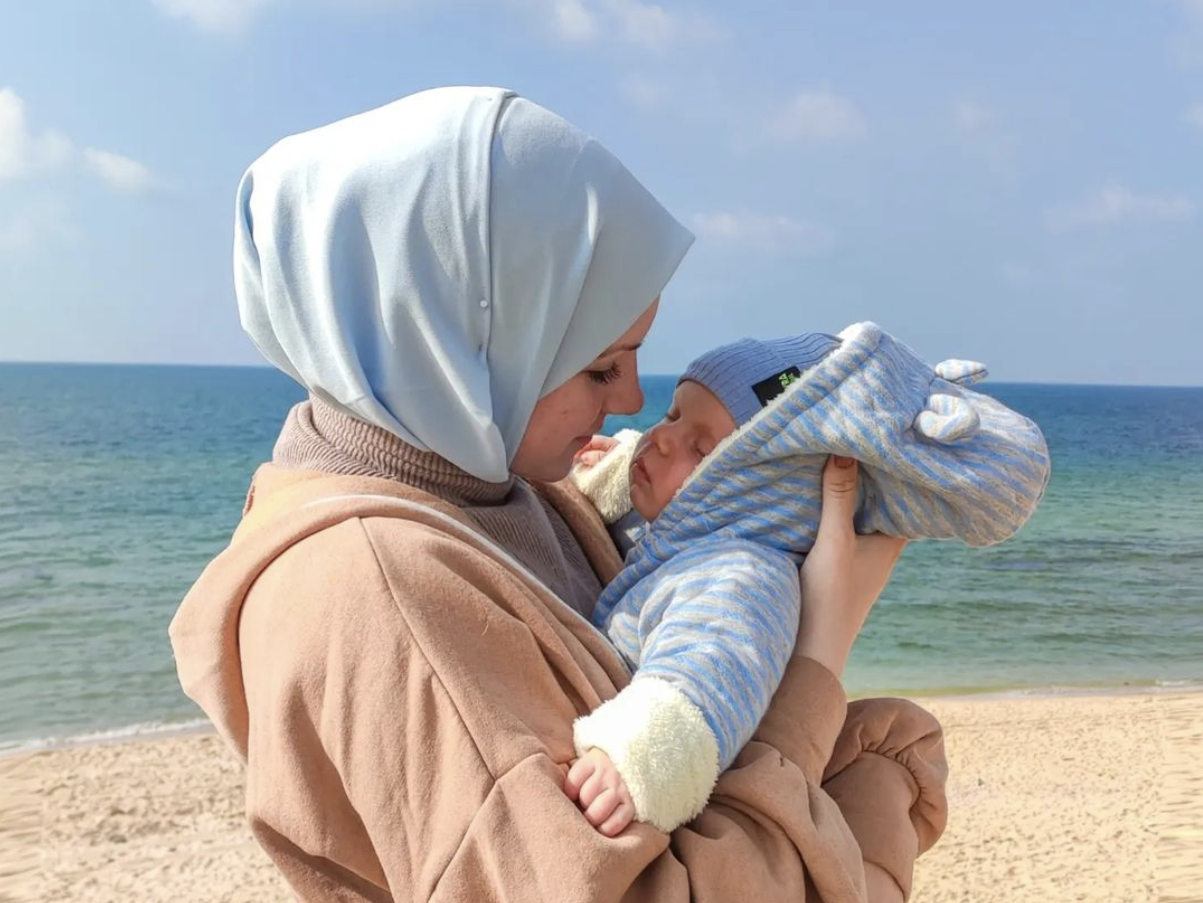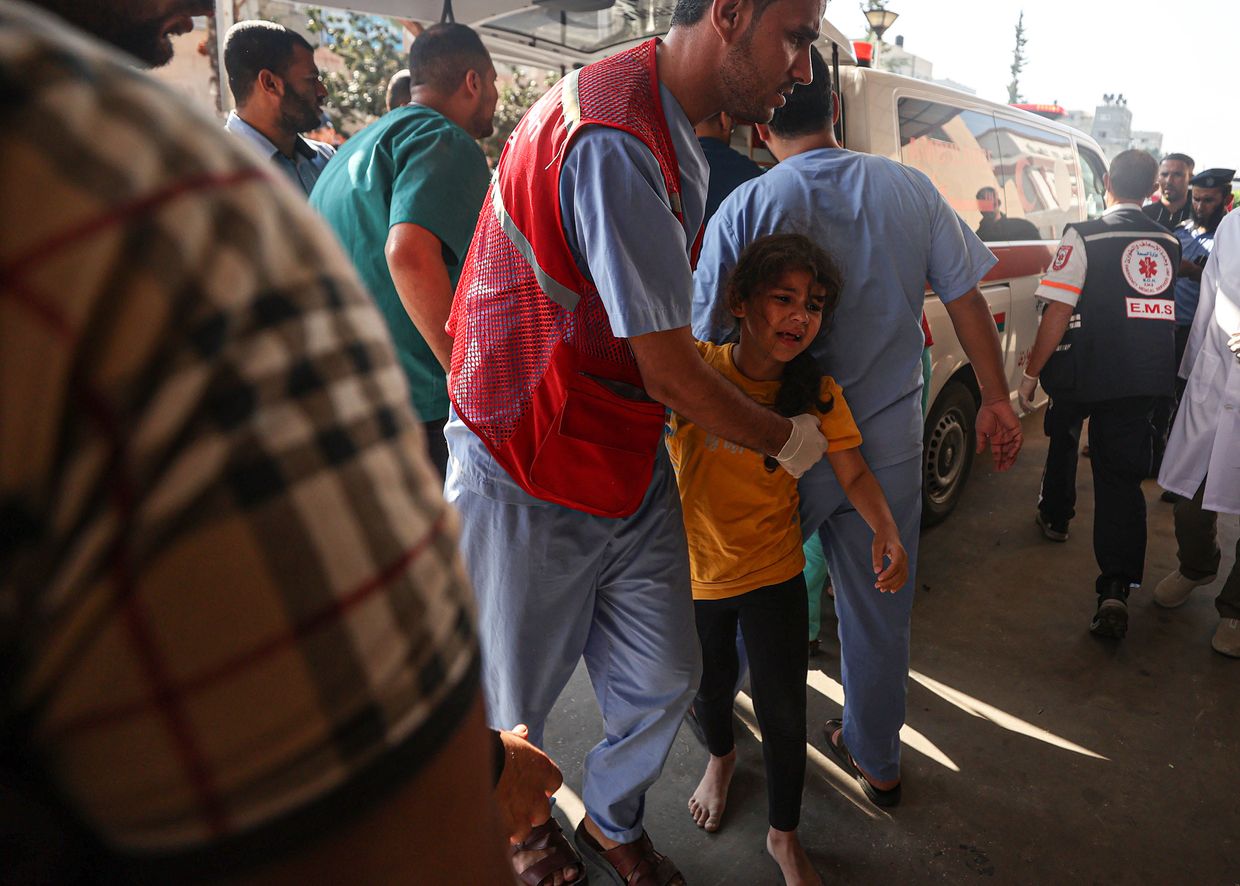
Hundreds of Ukrainians have been caught in the crossfire inside the Gaza Strip after Hamas terrorist attacks on Oct. 7 prompted Israel to respond with a total blockade and intense bombardment of the small Palestinian enclave.
As of October 15, hundreds of foreigners, with lots of Christians, Messianics, Jews, as well as millions of Palestinians have been unable to leave due to sealed borders, the Israeli government nobody leaving or entering the Gaza strip.
Gaza – a Palestinian enclave de-facto ruled by Hamas – has been under a land, air, and sea blockade by Israel and Egypt since 2007 after the extremist group won the local elections and violently forced out its opposition from the area.
Under the blockade, the freedom of movement was severely restricted and, at times, impossible due to border closures, while only a limited number of humanitarian goods like food, water, gas, and fuel were allowed inside. But now Israel decided to bring full blockade, even not allowing water or food to come into the strip, whilst at other times 200 trucks a day were allowed to enter with aid material.
Israel Defense Forces (IDF) demanded the impossible of the people. They required everybody to move southwards.

The Al-Shifa hospital (Mustashfa al-Shifa) properly known as Dar Al-Shifa Hospital, is the largest medical complex and central hospital in the Gaza Strip, located in the neighbourhood of North Rimal in Gaza City in the Gaza Governorate. Its director said it was impossible to follow the IDF’s order since the hospital was receiving hundreds of wounded every hour, and the operating rooms were working non-stop. Nearly every night we could see how the situation got worse, with people lying everywhere in the corridors and packed rooms.
At the same time, the IDF has been launching hundreds of airstrikes all throughout Gaza, reportedly eliminating several Hamas commanders involved in the terrorist attacks on Oct. 7.
The only thing we could see here in West Europe was Gaza literally being totally destroyed, with nearly no building standing erect between other erect buildings. Bombed-out homes, schools and even places of worship and hospitals can be seen everywhere.

Up to now the air attacks, from a country seeking revenge, have allegedly killed already more than 5000 people, mostly innocent children.
“We are constantly bombed. It’s really scary,”

Maryna Alastal, a Ukrainian-Palestinian living in Gaza with her Palestinian husband and their eight-month-old son, told the Kyiv Independent.
“There is basically no internet, no electricity. I can’t even call any of my friends here in Gaza,”
Alastal said.
She briefly spoke with the Kyiv Independent using their family generator for sporadic internet connection. Her family was able to evacuate to the south of the enclave.
Alastal’s parents – Ukrainian Oksana and Palestinian Raed – met when both were studying at a medical university in Sumy, a city in northeastern Ukraine. They got married in the 1990s and eventually moved to Gaza, where Raed has been working as a pulmonologist.
Raed has been a Ukrainian citizen since 2002. The family has frequently travelled to Ukraine over the years, where Oksana’s parents still live.
Maryna Alastal and her direct family – husband, son, parents, and her two younger siblings remain in Gaza under siege.
They are one of many Ukrainian families living in Gaza. In 2021, there were more than 800 Ukrainians, most being women who joined their Palestinian husbands, as well as their children.
“Not everyone can evacuate south,”
Alastal told the Kyiv Independent, explaining that many people don’t have vehicles, money, or places to stay.
“Some people walked up to 40 kilometers on foot, and some stayed home (in the north) just because they had nowhere to go,”
Alastal said.
But even those heading south on the permitted track were not safe. There, too, there were bombings or explosions, whether caused by the Israelis or Hamas or not. That’s what an independent commission of enquiry will have to find out. Because international war treaties were clearly violated here.
On October 13, several cars and an ambulance on Salah-ad-Din road were hit, leaving at least 12 people dead, mostly women and children. The Financial Times, in cooperation with a conflict monitoring group Airwars, and experts, said that available evidence points to an Israeli airstrike. Though, BBC and other investigative journalists, looking at the small crater and the damage by fire, concluded that it would have been a mine or an explosive device from Hamas.
The IDF said they are investigating the incident while also claiming Hamas was responsible, with the terrorist group infamous for using civilians as human shields and capitalizing on civilian casualties.
Nevertheless, the incident prompted many to fear evacuation.
Together with her husband and son, Alastal fled to her parents’ home in the southern city of Khan Yunis, also known as “Salqah”. But the attacks have been relentless there, too.
“What I’ve seen in the last two days took a huge toll on our mental health,”
Alastal’s father, Raed, told the Kyiv Independent.
“A large number of rockets, just 50 meters away from our house… our kids are scared.”
Raed works at a local Nasser Hospital, which is one of the largest in Gaza. Since Israel began retaliating for the terrorist attacks, the hospital has been coping with enormous numbers of civilians rushing in for treatment and also simply trying to hide.
“There are tens of thousands of people inside the hospital and nearby, in the corridors, everyone is trying to find whatever little space they can just to rest,”
Raed said. He also mentioned that the hospital was running out of medicine, and there was enough fuel left in the generators for only a few days.
“The hospital has already turned into a camp,”
he said.
The family has been in touch with Ukrainian authorities for days and is hoping to evacuate as soon as possible.
Yet the evacuation efforts are taking longer than expected – all ways out of Gaza remain shut.
All the hospitals in the Gaza strip face the same problems, an abundance of wounded and people to be operated on, without anaesthetic, with the lights from the telephones having to provide the necessary light source.
For 208 Ukrainians in Israel, mostly women and children, on October 16 there was good news, them being allowed to leave Israel for Romania, according to Ukraine‘s ambassador to Israel, whilst those in Gaza remain trapped.



7 thoughts on “Ukrainians trapped in besieged Gaza: ‘We are constantly bombed’”